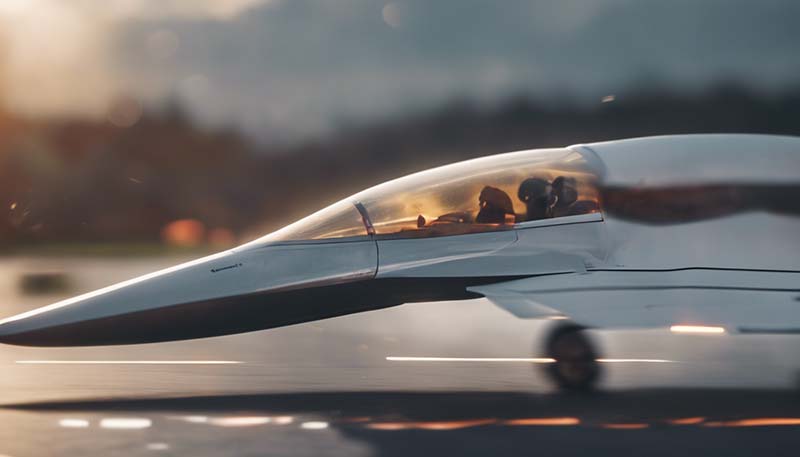The concept of hypersonic flight has been a dream for aerospace engineers and enthusiasts for decades. With speeds exceeding Mach 5 (3,800 mph or 6,100 km/h), hypersonic vehicles have the potential to revolutionize air travel, military operations, and space exploration. In this article, we will explore the current state of hypersonic technology, its potential applications, and the challenges that must be overcome to make this dream a reality.
Current State of Hypersonic Technology
While hypersonic flight may seem like a futuristic concept, several countries and organizations have already made significant progress in this field. The United States, Russia, and China have all been working on hypersonic vehicles, with some successful test flights and prototypes. In the United States, the Defense Advanced Research Projects Agency (DARPA) and the Air Force Research Laboratory (AFRL) have been leading the charge in developing hypersonic technologies.
In 2013, the AFRL successfully tested the X-51A WaveRider, a scramjet-powered hypersonic vehicle that reached speeds of Mach 5.1. More recently, in 2019, the United States conducted a test flight of the Hypersonic Glide Body (HGB), a weapon system capable of achieving hypersonic speeds. While these are just a few examples, it's clear that significant progress has been made in the development of hypersonic technology.
Potential Applications of Hypersonic Flight
1. Air Travel
One of the most exciting potential applications of hypersonic flight is in the realm of air travel. Imagine traveling from New York to Los Angeles in just 30 minutes, or from London to New York in an hour. With hypersonic aircraft, these scenarios could become a reality, drastically reducing travel time and making the world more connected than ever before.
Advertisement
In fact, several companies are already working on developing hypersonic passenger planes. For example, Boom Supersonic is developing the Overture, a commercial airliner designed to carry 65-88 passengers at a cruising speed of Mach 2.2. While the development of hypersonic passenger planes is still in its early stages, it's clear that the potential for faster-than-ever air travel is within reach.
2. Military Operations
Hypersonic technology also has significant implications for military operations. Hypersonic missiles, for example, could be used to strike targets with incredible speed and precision, making them difficult to intercept and defend against. As a result, several countries are investing heavily in the development of hypersonic weapons systems.
Moreover, hypersonic vehicles could also be used for reconnaissance and surveillance missions, as their speed and altitude would make them difficult to detect and track. This could provide military forces with a significant advantage in terms of intelligence gathering and situational awareness.
3. Space Exploration
Hypersonic flight also holds promise for space exploration. By using hypersonic vehicles as launch platforms, it may be possible to reduce the cost and complexity of sending payloads into orbit. In addition, hypersonic technology could be used to develop new types of spacecraft, such as reusable spaceplanes that can take off and land like traditional aircraft.
Challenges to Realizing Hypersonic Flight
Despite the significant progress made in the field of hypersonic technology, there are still several challenges that must be overcome before hypersonic flight becomes a reality. Some of the main challenges include:
1. Materials and Heat Resistance
One of the biggest challenges in developing hypersonic vehicles is finding materials that can withstand the extreme heat and stress generated by traveling at such high speeds. As a vehicle moves through the atmosphere at hypersonic speeds, it encounters的空气动力学加热, which can cause materials to break down or fail. Researchers are currently exploring new materials and coatings that can better withstand these extreme conditions.
2. Engine Technology
Another challenge in the development of hypersonic vehicles is the need for advanced engine technology. Traditional jet engines are not capable of sustaining the high thrust required for hypersonic flight. Scramjets, or supersonic combustion ramjets, are one potential solution, as they can operate at high speeds and efficiently combust fuel in the thin atmosphere at high altitudes. However, developing reliable and efficient scramjet engines remains a significant challenge.

3. Control and Stability
Controlling and maintaining stability at hypersonic speeds is another challenge for engineers. As vehicles travel faster, they become more susceptible to aerodynamic forces and vibrations that can affect their stability and control. Developing advanced control systems and aerodynamic designs that can maintain stability at hypersonic speeds is crucial for the safe and reliable operation of hypersonic vehicles.